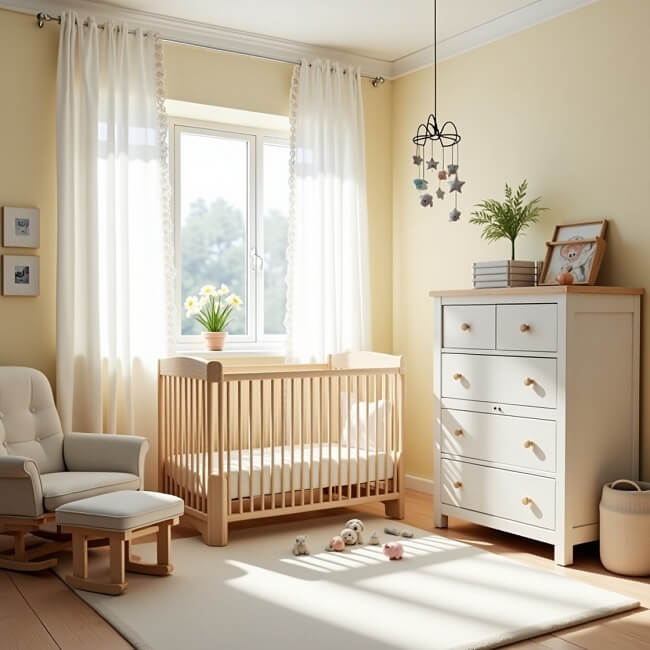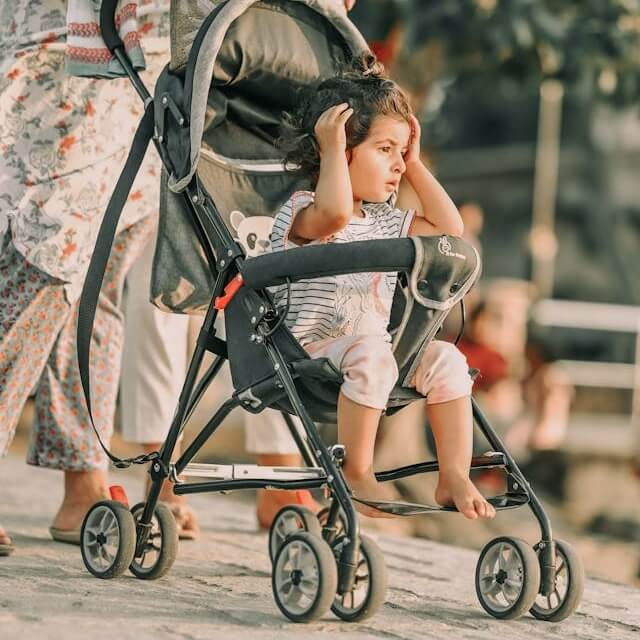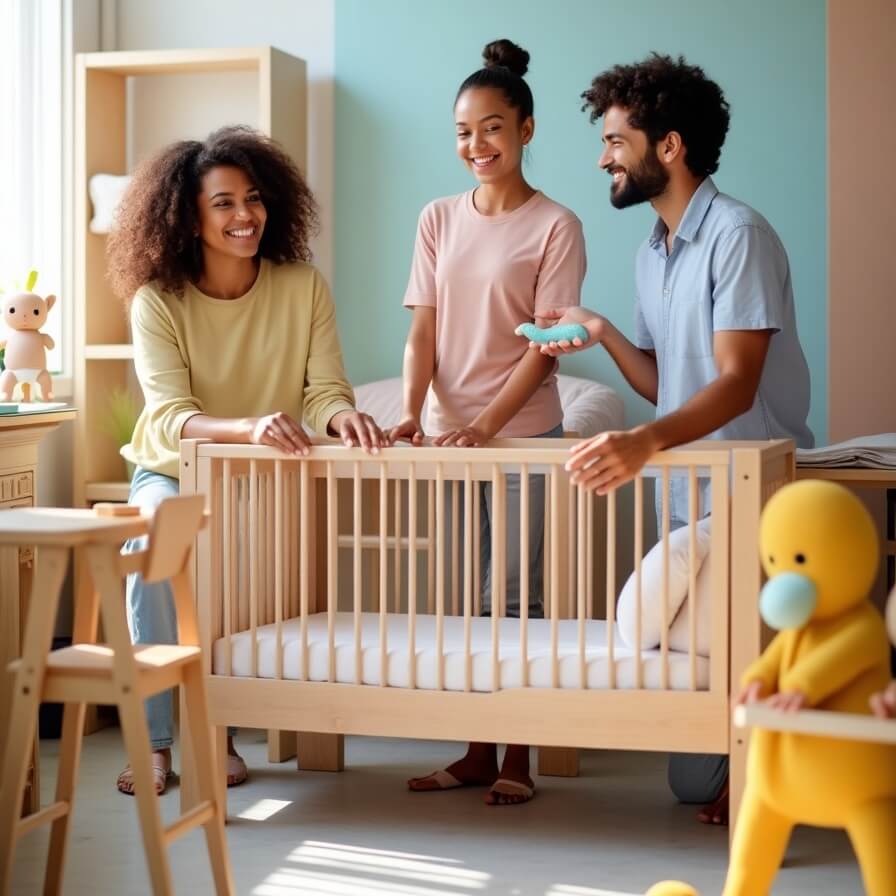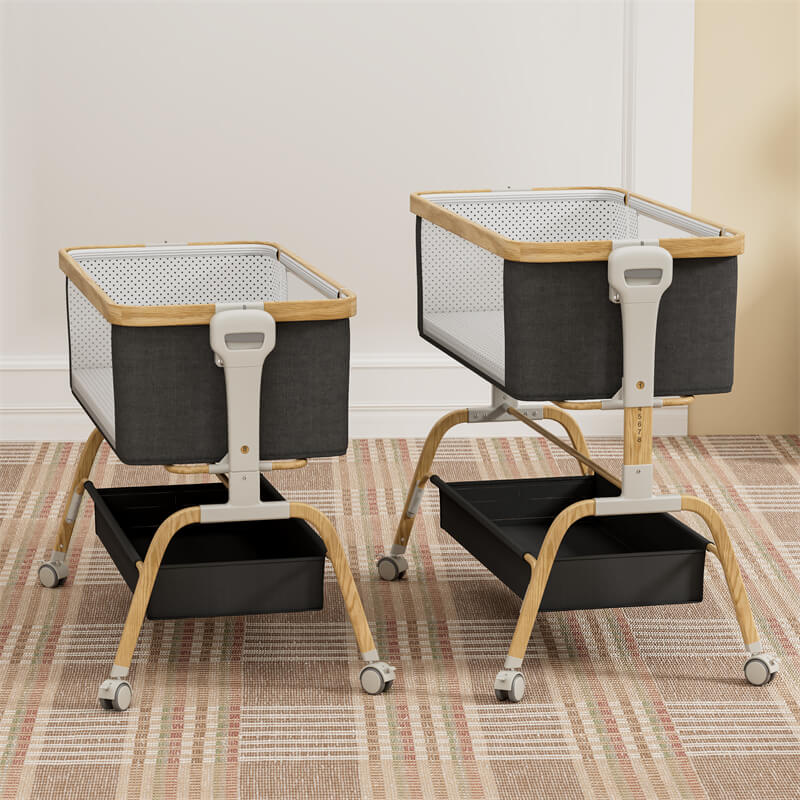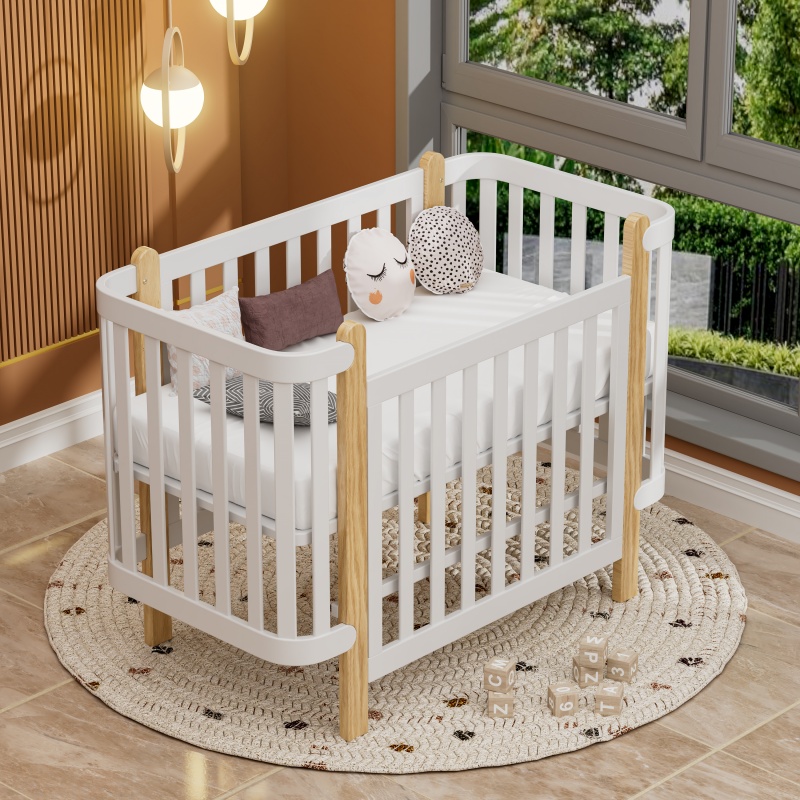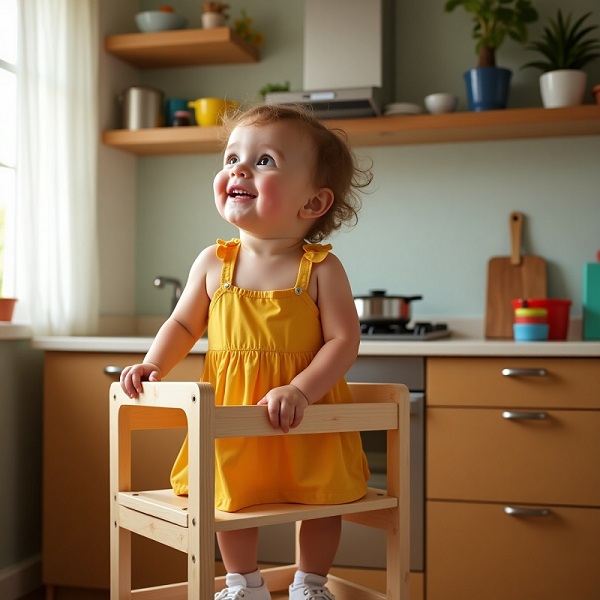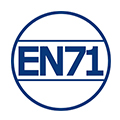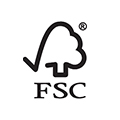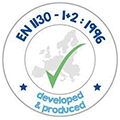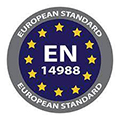Did you know that babies can spend up to 16-18 hours a day in their cribs during the first few months of life? With that much exposure, the materials used in their furniture aren’t just a matter of durability—they can directly impact their health.
According to Environment California’s “Toxic Baby Furniture” report (2008), tests of 21 nursery products revealed that 6 out of 21 items released high levels of formaldehyde vapor—enough to raise indoor air levels to 30–52 ppb. Formaldehyde isn’t the only concern. Some conventional children’s mattresses emitted phthalates, flame retardants, and hormone-disrupting chemicals.
Because their lungs and immune systems are still developing, these toxic exposures may contribute to allergies, asthma, respiratory irritation—even hormone disruption, and in rare cases, longer-term serious health issues.
Parents often assume that “natural” or “premium” labels guarantee safety, but the reality is more complex. In this article, we’re taking a deep dive into the materials behind your baby’s furniture—from solid wood versus composite wood, to paints, fabrics, metals, and plastics—to help you choose designs that don’t just look good but genuinely support your family’s health.
What Are the Safest Wood Types for Baby Furniture?
When choosing wood for baby furniture—whether it’s a crib, rocking chair, or dresser—not all types are created equal. Some woods are more durable, non-toxic, and resistant to mold or pests, while others may contain irritating sap or require chemical treatments that pose risks.
Top Choices for Non-Toxic, Baby-Safe Wood
Hardwoods are the gold standard for baby furniture because they’re dense, durable, and less likely to splinter than softwoods—crucial for cribs, playpens, and high-use items. In addition, its characteristics also determine that it does not require deep processing, thus not introducing volatile organic compounds.
Maple wood, with its tight grain structure and natural resistance to bacterial growth, has become a favorite among crib manufacturers. Its smooth surface withstands teething better than softer alternatives while maintaining structural integrity over the years of use.
Oak and beech offer similar durability for larger pieces like dressers and bookshelves, though their more open grain patterns require thorough sanding to prevent potential splinters.
Ash, while less common in mass-produced items, provides exceptional resilience for heirloom-quality rocking chairs and cradles.
Softwoods: Lightweight and Affordable
Pine and poplar are softer woods that offer cost-effective alternatives. While they may dent easily, their lighter weight makes them suitable for pieces that may need frequent moves, like bassinets or lightweight bouncers.
Pine is budget-friendly and widely available, though more susceptible to marks. Poplar is smooth and non-splintering, often used in baby furniture where budget and safety are both important.
Sustainably Sourced Baltic Birch Plywood
While solid wood is ideal, high-quality plywood (like Baltic birch) is a safe, budget-friendly alternative for items like crib bases or storage units. Unlike cheaper particleboard, it uses formaldehyde-free adhesives and has no added urea-formaldehyde resins, which the EPA classifies as a known human carcinogen.
Are Paints and Finishes on Baby Furniture Safe?
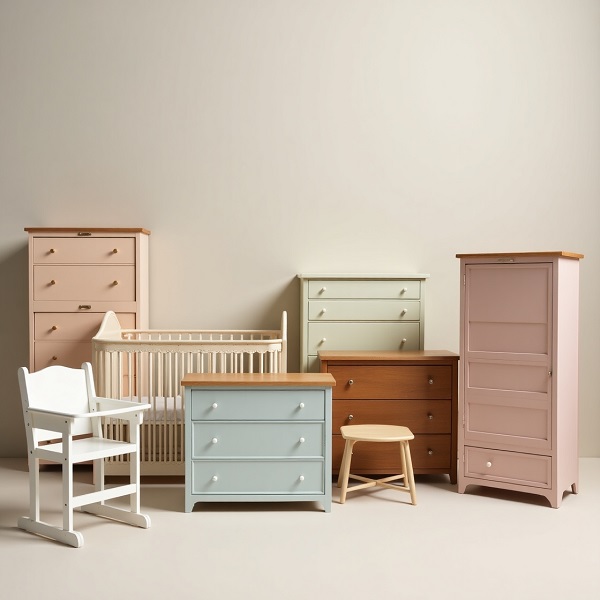
The cheerful pastel crib or glossy white dresser might catch your eye in the nursery, but what’s lurking in that paint and finish could be far less charming.
Conventional paints often contain volatile organic compounds (VOCs)—chemicals that evaporate into the air long after painting, potentially leading to headaches, respiratory irritation, or worse over time (like liver, kidney, or nervous system damage).
The EPA notes indoor VOC levels can be 2–5× higher than outdoors, and babies breathe more air relative to their size—meaning more exposure when they’re in painted nurseries.
Heavy metals such as lead are especially worrisome, as their use in household paint was prohibited starting in 1978. The CPSC has issued multiple recalls over the years for cribs and toys with lead-based paint violations.
What Makes a Finish Truly Baby-Safe?
Leading options include water-based acrylics and natural oil finishes such as beeswax or plant-based hard wax oils. These alternatives avoid the use of harsh solvents found in polyurethane and lacquer. Milk paint is also a safe alternative, made from a classic mix of lime, clay, and milk protein.
Safety Certifications to Watch For
Green Seal GS-11, Greenguard Gold, orDeclare Red List Free: These ensure comprehensive indoor-air quality compliance.
ASTM F963 & EN 71‑3: Toy safety certifications verifying the paint passes tests for heavy metals and safety in oral contact.
USDA BioPreferred: Signifies that the product contains a high percentage of biobased materials and minimizes the use of petroleum-based ingredients.
GREENGUARD Gold: Certifies ultra-low VOC emissions (less than 50 µg/m³).
OEKO-TEX® Standard 100: Screens for more than 350 potentially harmful chemicals, including heavy metals and formaldehyde.
Red Flags to Watch For
Strong chemical smells – Even if labeled “low-VOC,” persistent odors suggest ongoing off-gassing.
High-gloss finishes – Often achieve their shine with added plasticizers. Matte or satin options tend to be safer.
“Antiqued” or distressed looks – May contain layered paints with unknown lead content.
Special Considerations for Different Furniture Types
Cribs & Bassinets – Require the strictest standards due to teething and prolonged exposure. Unfinished hardwood or GREENGUARD Gold-certified painted surfaces are best.
Dressers & Bookshelves – Water-based enamel holds up well to cleaning without toxic additives.
Rocking Chairs & High Chairs – Need durable finishes that resist saliva and food; look for food-contact-safe coatings.
What Fabrics and Upholstery Are Baby-Friendly?
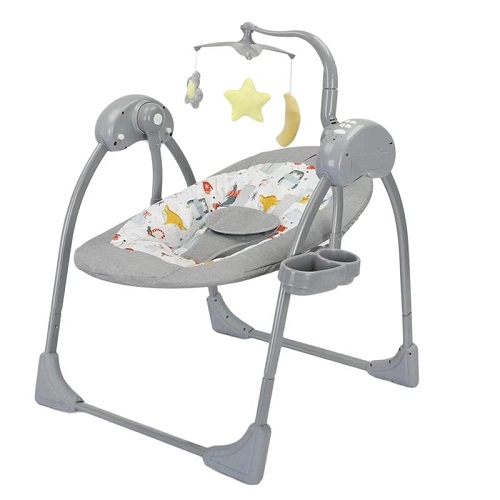
From the moment a newborn nestles into their crib sheets to the hours spent cuddling in a nursing chair, these textiles constantly interact with delicate skin and developing respiratory systems. Unfortunately, many conventional nursery fabrics harbor hidden chemical treatments that persist long after manufacturing.
Which fabrics are safe for babies?
Natural fibers like organic cotton, wool, linen, hemp, and bamboo viscose top the list. They’re hypoallergenic, breathable, and typically grown without toxic pesticides or flame retardants.
Grown without synthetic pesticides and free from formaldehyde-based wrinkle-resistant finishes, properly certified organic cotton provides the purest surface. The Global Organic Textile Standard (GOTS) certification offers particular reassurance, as it prohibits toxic dyes and heavy metals.
Linen offers inherent hypoallergenic properties and superior breathability. Unlike cotton, linen requires fewer chemical treatments during processing, reducing potential irritant exposure. Its natural moisture-wicking ability helps regulate temperature in both warm and cool conditions.
Bamboo viscose has gained popularity for its silky softness and thermoregulating properties. Well-made bamboo textiles work particularly well for fitted sheets, wearable blankets, and breathable mesh liners in playpens, offering natural antibacterial benefits alongside comfort.
Wool deserves special consideration for its unique natural properties, particularly in temperature regulation and fire resistance. Unlike synthetic materials that often require chemical flame retardants, wool’s natural structure provides inherent protection. This makes it valuable for mattress pads, winter sleepwear, and glider ottomans.
Is Metal Baby Furniture Safe?
When designing a nursery, metal furniture often gets overlooked in favor of warm wooden pieces—but it shouldn’t be dismissed. From sleek crib frames to space-saving high chairs, metal furniture offers durability and easy cleaning that appeals to many parents.
Unlike wood, metal doesn’t off-gas VOCs or contain formaldehyde, making it inherently safer from an air-quality perspective.
However, safety considerations extend beyond off-gassing potential. The U.S.has banned lead-based paint, but imported furniture may still contain traces.
Powder-coated steel stands as the premier selection for critical nursery pieces. The electrostatic application process bonds pigment directly to the metal substrate without solvents, creating a durable finish that resists chipping and wear. This makes it ideal for crib frames and high chairs where surface integrity directly impacts safety.
Are Plastic and Composite Materials Safe for Babies?

Plastic safety depends heavily on the type of material and the chemicals used in manufacturing. Some plastics are relatively inert and safe, while others can release harmful substances that may pose serious health risks, especially for infants who explore the world by mouthing their surroundings.
Among the safest plastics for babies are high-density polyethylene (HDPE), low-density polyethylene (LDPE), and polypropylene (PP). These materials are commonly used in food-grade containers and baby products because they are stable, do not leach harmful chemicals under normal use, and are considered non-toxic when used appropriately.
However, not all plastics are created equal. Plastics like polyvinyl chloride (PVC), polystyrene (PS), and polycarbonate—typically labeled as #3, #6, and #7—are regarded as high-risk materials when it comes to infant exposure. These materials are known to contain or release hazardous substances like phthalates, bisphenol A (BPA), and even heavy metals such as lead and cadmium.
In addition to plastics, composite woods used in cribs, dressers, and changing tables—such as medium-density fiberboard (MDF), particleboard, and plywood—can present their own hazards. These engineered materials are typically bound together using adhesives that emit formaldehyde, a volatile organic compound (VOC) linked to respiratory irritation, asthma, and even cancer.
While no plastic is completely risk-free, smart choices and correct use can minimize potential harm. When it comes to composite materials, be cautious and give priority to solid wood materials.
How Can You Check for Safety Certifications?
Many parents find some labels confusing—vague terms like “non-toxic” or “eco-friendly” often lack standardized definitions, while legitimate certifications go unnoticed.
A 2023 study by the Ecology Center found that 48% of children’s products making “BPA-free” claims contained other bisphenols of equal concern. Similarly, “phthalate-free” labels don’t guarantee the absence of alternative plasticizers with unknown safety profiles.
Essential Certifications for Baby Furniture
GREENGUARD Gold (UL ECOLOGO): This certification ensures ultra-low chemical emissions, with stricter standards than the basic GREENGUARD certification. It screens for over 360 VOCs, including harmful substances like formaldehyde and acetaldehyde. It is especially suitable for cribs, mattresses, and upholstered furniture.
JPMA (Juvenile Products Manufacturers Association): JPMA certification indicates that a product complies with ASTM and CPSC safety standards, verified through annual facility inspections. It focuses on structural safety aspects such as slat spacing and tip-over resistance, but does not address chemical content. This certification is ideal for items like cribs, high chairs, and strollers, where mechanical failure could pose serious risks.
OEKO-TEX® Standard 100: This certification tests fabrics and foams for over 350 harmful substances, including heavy metals and pesticides. For baby products, only the “Product Class I” certification is relevant, as it sets the most stringent safety limits specifically for items intended for infants. OEKO-TEX® is especially important for products like mattress covers, bedding, and any upholstery with fabric components.
CPSIA Compliance: This certification verifies compliance with the Consumer Product Safety Improvement Act, including restrictions on lead, phthalates, and other hazardous substances. Compliance must be verified through the manufacturer’s Children’s Product Certificate (CPC), which should be available upon request. However, CPSIA does not cover VOCs or other chemical hazards.
Practical Verification Tips
1. Look for multiple certifications – A crib with both GREENGUARD Gold and Declare labels offers more comprehensive protection than single-certified products.
2. Beware of certification stacking – Some manufacturers highlight less relevant certifications while omitting key safety standards.
3. Check certification scope – A “certified foam” claim doesn’t guarantee the entire product meets standards.
4. Verify current status – Certifications require annual renewal; check the issuer’s database for active listings.
What Are Common Toxic Materials to Avoid?
| Toxic Substance | Commonly Found In | Associated Baby Furniture | Health Risks |
| Formaldehyde | MDF, particleboard, adhesives | Cribs, bookshelves, dressers | Carcinogenic, respiratory irritation |
| Flame Retardants | Polyurethane foam, fabric coatings | Crib mattresses, gliders, high chairs | Neurotoxicity, hormone disruption |
| Phthalates | PVC/vinyl, plasticizers | Changing pads, crib rail covers | Endocrine disruption, developmental harm |
| Lead & Heavy Metals | Painted surfaces, metal components | Vintage cribs, toy chests, hardware | Neurological damage, anemia |
| VOCs | Paints, stains, synthetic fabrics | Painted cribs, upholstered rockers | Headaches, organ damage |
| PFAS | Waterproof coatings | Mattress protectors, high chair seats | Immune suppression, cancer risks |
What Are the Best Eco-Friendly and Sustainable Baby Furniture Materials?
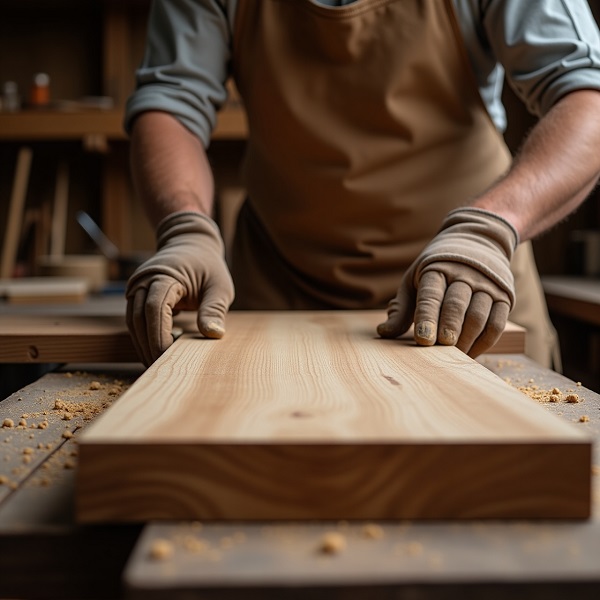
Reclaimed or Sustainably Sourced Solid Wood
Reusing materials reduces the demand for new deforestation. Their longevity—often spanning multiple children—reduces consumption cycles, making them ideal for cribs, dressers, and bookshelves that form a nursery’s foundation.
Bamboo (Properly Processed)
This fast-growing grass reaches maturity in just 3-5 years compared to decades for hardwoods, and its natural resistance to pests eliminates the need for chemical treatments. Well-made bamboo works particularly well for changing tables and storage units where strength and lightness combine for practical use.
Organic Cotton & Linen
Organic cotton and linen turn textile elements into environmentally friendly, sustainable materials. Linen, derived from flax plants, requires minimal irrigation and naturally resists mold. These fibers shine in mattress covers, fitted sheets, and upholstery when certified by the Global Organic Textile Standard, which prohibits hundreds of processing chemicals.
Natural Latex (vs. Synthetic Foam)
The harvesting process involves tapping trees without felling them, creating a renewable resource that supports forest preservation. Unlike petroleum-based memory foam, natural latex emits no volatile organic compounds and maintains its supportive properties for decades. This makes it perfect for crib mattresses and nursing chair cushions.
Natural Finishes(Beeswax, Plant Oils)
Beeswax, carnauba, and plant‑based oils (like olive or linseed) create durable, non‑toxic surfaces. Luxury sustainable furniture lines commonly use these simple ingredients, steering clear of solvents and harmful additives.
Conclusion
Creating a nursery that is both safe and sustainable requires more than just selecting individual eco-friendly products—it demands a thoughtful, integrated approach that considers materials, indoor air quality, and long-term usability. As we’ve explored throughout this guide, every choice—from the wood in your baby’s crib to the fabrics in their bedding—impacts both their immediate well-being and the world they’ll inherit.
Clafbebe is a well-known manufacturer and supplier of baby furniture with multiple product series. Our products are exported to Europe, America, the Middle East, and Southeast Asia, and are unanimously recognized by customers.
We maintain rigorous quality control and prioritize product safety above all else. Clafbebe’s safe and high-quality raw materials ensure that the products do not contain chemicals that are harmful to the baby’s health. The products are inspected layer by layer before leaving the factory.
Reach out to Clafbebe today for baby furniture solutions that are both safe and eco-friendly!
Recommended Related Articles:

